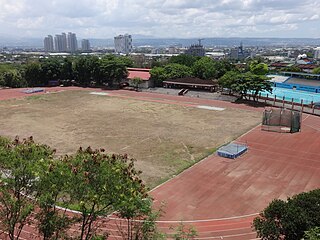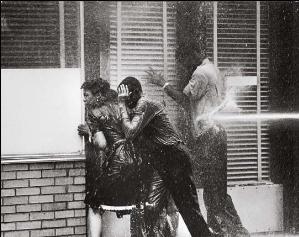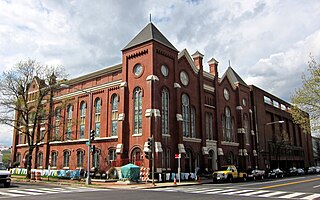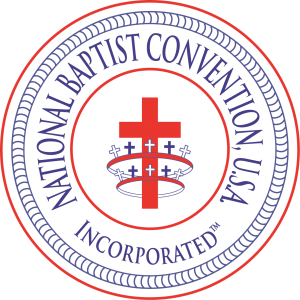
The 16th Street Baptist Church bombing was a terrorist bombing of the 16th Street Baptist Church in Birmingham, Alabama on September 15, 1963. The bombing was committed by a white supremacist terrorist group. Four members of a local Ku Klux Klan (KKK) chapter planted 19 sticks of dynamite attached to a timing device beneath the steps located on the east side of the church.
"Shouting fire in a crowded theater" is a popular analogy for speech or actions whose principal purpose is to create panic, and in particular for speech or actions which may for that reason be thought to be outside the scope of free speech protections. The phrase is a paraphrasing of a dictum, or non-binding statement, from Justice Oliver Wendell Holmes Jr.'s opinion in the United States Supreme Court case Schenck v. United States in 1919, which held that the defendant's speech in opposition to the draft during World War I was not protected free speech under the First Amendment of the United States Constitution. The case was later partially overturned by Brandenburg v. Ohio in 1969, which limited the scope of banned speech to that which would be directed to and likely to incite imminent lawless action.

The PhilSports Stadium Stampede was a crowd crush that occurred at the PhilSports Stadium in Pasig, Metro Manila in the Philippines on February 4, 2006. It killed 73 people and injured about 400. About 30,000 people had gathered outside the stadium waiting to participate in the first anniversary episode of the former television variety show Wowowee.

The Birmingham campaign, also known as the Birmingham movement or Birmingham confrontation, was an American movement organized in early 1963 by the Southern Christian Leadership Conference (SCLC) to bring attention to the integration efforts of African Americans in Birmingham, Alabama.

The Rhythm Club fire was a fire in a dance hall in Natchez, Mississippi on the night of April 23, 1940, which killed 209 people and severely injured many others. Hundreds of people were trapped inside the building. At the time, it was the second deadliest building fire in the history of the nation. It is now ranked as the fourth deadliest assembly and club fire in U.S. history.
The Ellis Park Stadium disaster was a crowd crush that occurred on 11 April 2001, claiming the lives of 43 people. Surpassing the Oppenheimer Stadium disaster, it became the worst sporting accident in South African history. Spectators poured into the Ellis Park Stadium in the city of Johannesburg, Gauteng, South Africa, for the local Soweto derby association football match between Kaizer Chiefs and Orlando Pirates. There was a 60,000 capacity crowd in the stadium, but reports suggest a further 30,000 more fans were trying to gain entry to the stadium. Reports also suggest that 120,000 fans were admitted into the stadium. An Orlando Pirates equaliser sparked a further surge by the fans trying to gain entry as they scrambled to see what had happened. The match was stopped after approximately 34 minutes of play when authorities received an unusually high volume of reported injuries.
The E2 nightclub stampede occurred on February 17, 2003, at the E2 nightclub above the Epitome restaurant at 2347 South Michigan Avenue in the South Loop neighborhood of Chicago, Illinois, in which 21 people died and more than 50 were injured when panic ensued from the use of pepper spray by a security guard to break up a fight. The club's owners were convicted of criminal contempt for their persistent failure to keep the facility up to code, and sentenced to two years probation.

Maidstone is a town in west central Saskatchewan, Canada located 57 km east of Lloydminster and 84 km west of North Battleford at the junction of Highway 16 and Highway 21. The community was named after Maidstone, Kent, England.

A stampede is a situation in which a group of large animals suddenly start running in the same direction, especially because they are excited or frightened. Although the term is most often applied to animals, there are cases of humans stampeding from danger too.

Shiloh Baptist Church is a Baptist church located in Washington, D.C. 20001 in the historic Shaw District. The church was founded in Fredericksburg, VA in 1804.

Richard Henry Boyd was an African-American minister and businessman who was the founder and head of the National Baptist Publishing Board and a founder of the National Baptist Convention of America, Inc.

The National Baptist Convention, USA, Inc., more commonly known as the National Baptist Convention, is a Baptist Christian denomination headquartered at the Baptist World Center in Nashville, Tennessee and affiliated with the Baptist World Alliance. It is also the largest predominantly and traditionally African American church in the United States and the second largest Baptist denomination in the world.

Second Baptist Church is a Baptist Church located in South Los Angeles, California. The current Lombardy Romanesque Revival building was built in 1926 and has been listed as a Los Angeles Historic-Cultural Monument (1978) and on the National Register of Historic Places (2009). The church has been an important force in the Civil Rights Movement, hosting national conventions of the National Association for the Advancement of Colored Persons ("NAACP") in 1928, 1942, and 1949, and also serving as the site of important speeches by Martin Luther King Jr., Malcolm X, and others. It is affiliated with the American Baptist Churches USA and the Progressive National Baptist Convention.

The Carnival tragedy of 1823 was a human crush which occurred on 11 February 1823 at the Convent of the Minori Osservanti in Valletta, Malta. About 110 boys who had gone to the convent to receive bread on the last day of carnival celebrations were killed after falling down a flight of steps while trying to get out of the convent.

William R. Pettiford was a minister and banker in Birmingham, Alabama. Early in his career he worked as a minister and teacher in various towns in Alabama, moving to the 16th Street Baptist Church in 1883 and serving there for about ten years. In 1890 he founded the Alabama Penny Savings Bank. It played an important role in black economic development in Alabama and in the South during the 25 years it existed. Pettiford has been called the most significant institutional builder and leader in the African American community in Birmingham during the period in which he lived. In 1897 he was said to be next to Booker T. Washington the black man who has done the most in the South for blacks.

Crowd collapses and crowd crushes are catastrophic incidents that can occur when a body of people becomes dangerously overcrowded. When numbers are up to about five people per square meter, the environment may feel cramped but manageable; when numbers reach between eight and ten people per square meter, individuals become pressed against each other and may be swept along against their will by the motion of the crowd. Under these conditions, the crowd may undergo a progressive collapse where the pressure pushes people off their feet, resulting in people being trampled or crushed by the weight of other people falling on top of them. At even higher densities, the pressure on each individual can cause them to be crushed or asphyxiated while still upright.
Rev. Dr. Robert Simon Laws, a formerly enslaved person and Howard University graduate, founded two African American Baptist churches in the 19th century that have active congregations in the 21st century.













